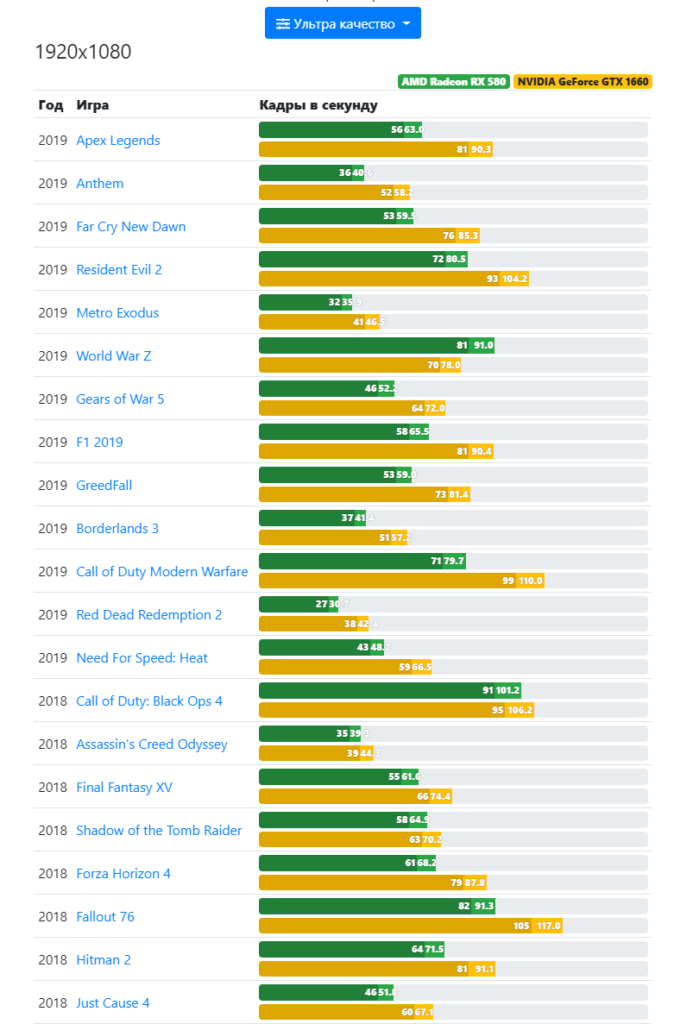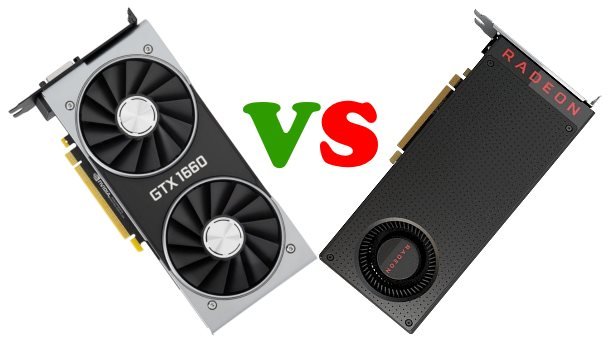Often, articles about computer components begin with a technical definition, after which the emphasis is placed on a serious approach to choosing hardware. If you have come across this material, you have an idea of what a video card is and how important it is for a computer component. Therefore, we will not beat around the bush and present to your attention two graphics processors that are in a heated battle.
RX 580
Let’s start with the 2017 model – AMD Radeon RX 580 , which became the most powerful solution in the RX500 series. RX 580 replaced the bestseller of its time – AMD Radeon RX 480. The new product received higher frequencies, reduced power consumption and noise level in comparison with its predecessor.

The model is based on the updated Polaris 20 core. Compared to its younger brother, the Polaris 10, there aren’t many changes:
- the operating frequency range per core has been increased to 1257-1340 MHz;
- reduced energy consumption for non-resource-intensive operating modes;
- The maximum fill rate has increased from 40.5 Gpix/s to 42.9 Gpix/s.
Otherwise, it is the same 14 nm process technology with 5700 million transistors and 2304 stream processors. The video card is released with identical memory as its predecessor – GDDR5 at 4 or 8 GB with a frequency of 8000 MHz.
As a result, we get a good graphics card at a budget price: the 4 GB version costs from $120, and the 8 GB version from $200. With good accompanying hardware, you can comfortably play popular AAA games in Full HD resolution:
- PUBG — 70 fps;
- Quake Champions — 130 fps;
- Red Faction: Guerrilla Re-Mars-tered – 130-135 fps.
GTX 1660
The “green” GTX 1660 video card was released in 2019 to push aside the aforementioned competitor, the RX 580 model from AMD. The 16th series of NVidia chips is an intermediate link between the 10th and 20th families.
The GTX 1660 runs on the TU116 core under the Turing architecture, the advantage of which we know from the top RTX 2060 and RTX 2070 cards. The only difference is the lack of RT and tensor cores for ray tracing. Overall, in terms of technical characteristics, it turned out to be a worthy competitor to the “red” RX 580:
- number of transistors – 6600 million;
- process technology – 12 nm;
- frequency – 1530-1785 MHz;
- number of stream processors – 1536;
- 6GB GDDR5 memory on a 192-bit bus;
- memory frequency – 8000 MHz;
- power consumption – 120 W.
6 GB of video memory and a 192-bit bus did not prevent the GTX 1660 from showing 35.9% more performance in synthetic tests than the RX 580.
If you look at the video game tests, then with similar system parameters in Full HD resolution with maximum graphics settings, the GTX 1660 demonstrates a good average fps result:
- The Witcher 3: Wild Hunt – 60-65 fps;
- Grand Theft Auto V – 80-85 fps;
- Rise of the Tomb Raider – 90 fps.
Verdict
After the release of the GTX 1660, NVidia made AMD nervous. The green guys pushed the competitors aside in terms of performance and power consumption. 120V for the GTX 1660 versus 185V for the RX 580 is a significant difference. For clarity, here are the results of comparative testing:

Speaking of cost, at the time of writing, the GTX 1660 6 GB starts at $240-250, and the red 8 GB model starts at $200. It’s up to you to decide whether it’s worth overpaying.






















ОТВЕТИТЬ